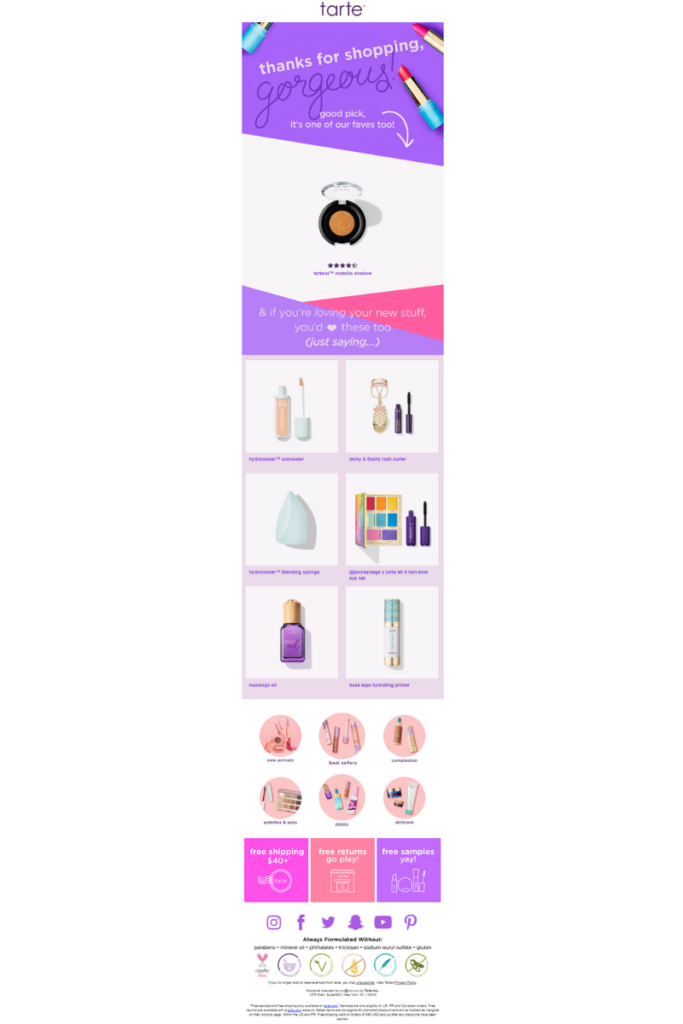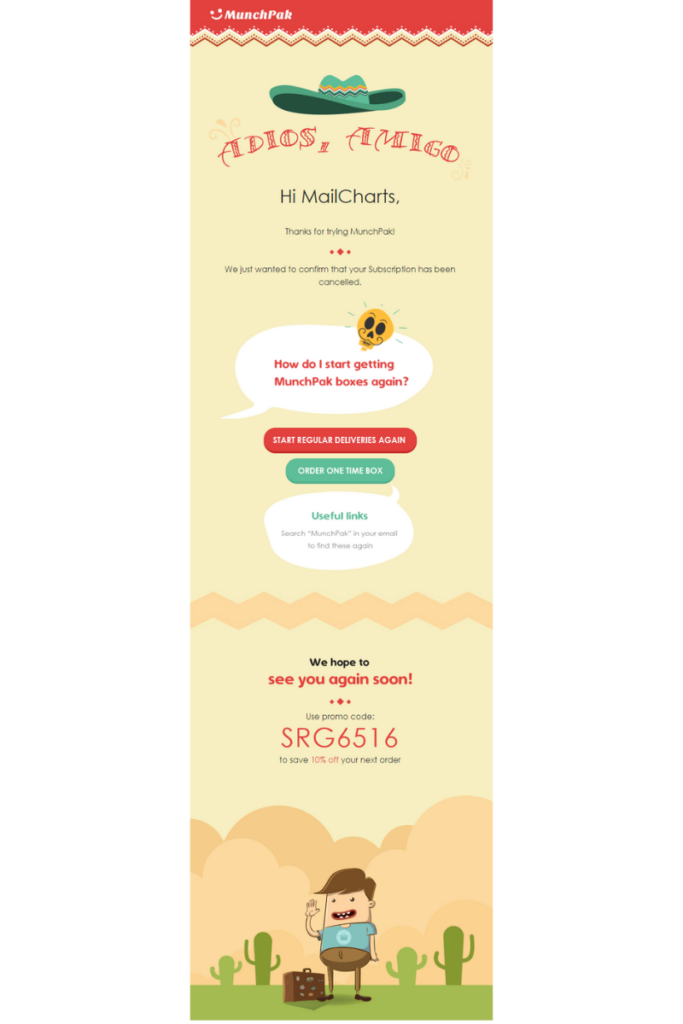What is email marketing?


Email marketing is a permanent fixture in digital marketing strategies – and for good reason. It’s the most effective way to connect with your leads and customers. It’s direct and efficient and the best channel you have to convert prospects into customers.
Email marketing is the branch of your digital marketing strategy that uses email to promote your brand, products, and services.
Using email marketing you’re engaging with leads that have expressed a direct interest in your brand by subscribing to your mailing list. You can keep customers on your mailing lists aware of new products, discounts, services, and more. It also acts as a strong engagement tool, where you can educate your audience on the value of your brand and keep them connected between purchases.
Email marketing has been part of marketing strategies for over twenty years and remains the most popular communication channel among the public. 73% of consumers prefer brands to connect with them via email.
While many have claimed that the end of email marketing is coming, the signs certainly do not indicate that happening any time soon. Email marketing remains one of the most cost-effective tools available to marketers. For every $1 spent, email returns and average $42 on investment.
And to budget-restricted, time-poor marketers that’s a benefit that cannot be underestimated.
How can email marketing help your business grow?
As the number of marketing channels expands, it’s easy for brands to focus on new strategies and let their email marketing languish on the sidelines. After all, we’ve been doing it for so long, email campaigns basically run themselves at this point, right?
Wrong.
Today’s marketers are under constant pressure to do more with less. At the same time, customers demand personalized and unique experiences at every touchpoint. As technology advances, there are more tools than ever to that make this goal achievable to marketers. But, it’s important not to forget about the channel you already have that makes this possible too.
Email marketing should be the first channel you optimize to deliver these experiences. Unlike any other channel at your fingertips, email can do all this and more. And all without breaking the bank.
Email marketing should be a top priority to marketers looking to grow their brand quickly and efficiently, and here’s why:
1. Email’s reach is universal
There are over 3.9 billion email users in the world – nearly triple the amount of Facebook and Twitter accounts combined. That’s a lot of potential customers out there, waiting to connect with your brand.
2. Email’s ROI is unbeatable
We’ve already mentioned that email marketing has an average return on investment (ROI) of $42 for every $1 spent. But with so many time-saving features, successful email marketing campaigns can defy all expectations. Marketing automation programs run your emails in the background, freeing up your time to focus on expanding and growing your brand.
3. Email can connect your channels
To sign up for channels like Facebook, Twitter, and Instagram, users need an email address. Therefore, in most cases, you’ll be able to find and connect with customers on their favorite social media platforms. You can also use email to drive traffic to blogs, reviews, and partner and affiliate sites.
4. Email is a clear sign of interest
Email relies on the organic growth of your mailing lists. That means anyone who signs up to your email marketing is expressing a clear interest in your brand. There is no better time to engage and convert customers than when they newly subscribe to your email marketing list.
5. Email is open to everyone
Whether you’re B2B, B2C, an institution, or a not-for-profit, email is the best way to connect with customers. Businesses rely on it; consumers check it regularly every day; and it enables communication with anyone, anywhere in the world. What’s not to love?
What is an email marketing strategy?
To ensure that your email marketing efforts are making an impact and driving business growth, you need to have a clear strategy.
Your marketing strategy should outline your overarching goals for business growth. Your email marketing strategy will help you achieve your goals by increasing customer engagement, maximizing ROI, improving retention, and driving customer loyalty. You need to set email marketing goals that will reach these goals.
To create a robust and comprehensive email marketing strategy, you must:
1. Set your marketing goals
What are you hoping to achieve? It could be anything from improved open rates, to boosting ROI. Whatever it is, be sure to set measurable targets in your strategy.
2. Pick the necessary email marketing tools
Not all email marketing tools are the same. Email marketing platforms vary significantly in functionality to be sure you’re selecting a platform that will allow you to achieve business growth.
3. Identify your target audience
Knowing who you’re targeting – their likes, dislikes, age, gender, and demographics – will help you get a clear understanding of what they want and which tactics you need to use.
4. Select list building tactics
Depending on your business, you will have different ways to acquire new customers. If you meet a lot of customers face-to-face or gather leads from partners, you must be growing your mailing lists appropriately and according to local laws.
5. Segment your marketing lists
When you identify your target audience you should get a clear idea of the segments you can create. Age, gender, and location are always good places to start, but as your lists grow, so should your segmentation tactics.
6. Choose types of email campaigns
How frequently are you planning on communicating with customers and what kind of content will you be sending? It’ll be easier to choose between newsletters or promotional updates once you know this.
7. Schedule email marketing campaigns
After you’ve decided on the types of emails you’ll be sending, it’s time to think about how frequently you’ll be running these campaigns. But don’t bombard your audience with multiple emails a day.
8. Test and optimize your email campaigns
Testing and optimization are essential for getting the results you want. You can test everything from subject lines to email layout. Identify tactics that work, optimize your email campaigns, but never stop testing.
9. Track your email marketing results
The only way you’ll know whether you’re achieving your marketing goals is by monitoring the results of every email campaign you send.
10. Review your strategy
Annual reviews of your email marketing will keep you on your toes and show you areas you need to improve or where to develop your strategy.
Examples of successful email marketing
1. Sweaty Betty

Sweaty Betty is ticking all the right boxes with this email. They clearly understand what is important to their consumers. As a result, it has crafted a newsletter about sustainable products that interest.
2. Sugarfina

Sugarfina sent this timely email in the lead up to Father’s Day. Gift guides are always popular around holidays as they help inspire the reader. By providing gift ideas, Sugarfina is encouraging the reader to click through to shop on its site.
3. SlideBelts

Back in stock emails are a must for ecommerce brands. This one from SlideBelts is highly effective. It has teamed the main CTA with related links giving the reader more ways to shop on its website.
4. Tarte Cosmetics

Tarte Cosmetics gives their order confirmations added impact by following them up with this brilliant upselling campaign. Product recommendations show the reader items bought with the product they purchased.
5. MunchPak

MunchPak does a fantastic job of turning an unsubscribe into an opportunity. The brand offers up several alternatives to keep readers engaged.


